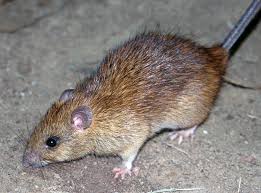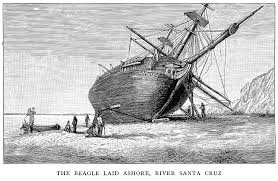One lesser known commercial usage of drones: to identify, and in some cases to mitigate or remove, invasive species.
Invasive species – in this case rats – have been a problem for the eco-system of parts of the Galapagos islands for many years. Drones have proven to be an invaluable tool that allows scientists to mitigate, or in some cases to remove entirely, the pesky rodents.

According to Galapagos Conservancy the problems were caused by the accidental introduction of black rats (Rattus rattus) to many of the Galapagos islands by whalers and/or pirates in the 17th or 16th century. The brown rat (Rattus norvegicus) was introduced to Santa Cruz and San Crisobal in the 1980s.
The rats eat the eggs of indigenous birds and tortoises that are typically laid on the ground. Having no natural predators in large enough numbers to control the population causes a problem, as it has reduced the numbers of the giant tortoises that were made famous in the work of Charles Darwin.

Giant tortoises are one of the longest lived species on the plant with known examples of tortoises of over 150 years old. The Galapagos islands are famous as they were the case study for Charles Darwin and his origin of species work in the 19th century. Darwin and a crew sailed to the islands in the mid-19th century on his ship the Beagle.The
Historically, rat poisons have been either been distributed by hand (hard even for small islands), or more recently by helicopter.
Now, says Island Conservation, the group responsible for using drones to eradicate rats on the island, drones are proving to be an invaluable tool.
The drones deliver bait produced by Bell Laboratories. “The bait’s formula was designed especially for projects within the Galápagos Archipelago due to their unique weather conditions.,” says Island Conservation.

“…With the support of Island Conservation and New Zealand’s Environment and Conservation Technologies LTD., a pilot project was implemented using drones and hoppers with applicators designed in 3D printers. 52% coverage of North Seymour Island was possible using this equipment, making it the world’s first use of drones to remove invasive vertebrates.”
“The use of drones is more precise; it also increases feasibility, and reduces eradication costs of invasive rodents in small and midsize islands worldwide,” says Karl Campbell, Island Conservation South American Regional Director.
(If you can not remember the Dr. Jones reference, according to the wiki fan page, “Rats infested the Venetian catacombs when Indiana Jones and Elsa Schneider journeyed there in 1938 in search of the tomb of Sir Richard.” Indiana Jones father, played by Sean Connery in the character of Dr. Henry Jones Sr., hated rats.)
CEO DroneLife.com, DroneRacingLife.com, and CMO of Jobfordrones.com. Principle at Spalding Barker Strategies. Has enjoyed working with and around the commercial drone industry for the last 10 years. Attendance and speaker at Industry Events such as Commercial UAV, InterGeo, Interdrone and others. Proud father of two. Enjoys karate, Sherlock Holmes, and interesting things. Subscribe to all things drone at DroneLife here. Email is Harry@dronelife.com. Make Sure that you WhiteList us in your email to make sure you get our Newsletter. Editor1@dronelife.com.